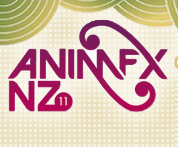 [oops I totally forgot to post this sooner!]
[oops I totally forgot to post this sooner!]
Day 3 of the conference was spent at Park Rd post productions for Weta’s digital day. This was awesome.
The first part of the day was largely focused on Rise of the Planet of the Apes and the latter half on the new Adventures of Tintin movie.
Chris White (VFX Supervisor) covered the huge amount of research and work that went into creating the digital apes for the movie.
Matt Muntean (Lead Creature TD) and Sonya Teich (Creature TD) discussed the technologies and techniques used to create the apes. I was fascinated to see how much was actually simulated rather then modelled. The apes had anatomically correct skeletons on top of which muscle and fat layers where simulated so that the skin could be correctly simulated. On top of that the skin itself was simulated in multiple layers with fat underneath to get skin wrinkles and movement on the face correct. The hair, cloth and water simulation was equally impressive.
Peter Hillman (Developer) discussed their deep compositing techniques using deep images (images that effectively contain Z data for each pixel) which allows various rendered layers to be easily composited ( and recomposited) together really quickly. The use of the properties of these deep images to easily composite life action plates with CG was simple but inspired.
Erik Winquist (VFX Supervisor) covered in depth the GoldenGate Bridge scene in the movie. This 11 minute scene had over 250 VFX shots and included outdoor motion capture covering a massive space. It was very interesting to see how all the parts and work fitted together to produce the final outcome.
Wayne Stables (VFX Supervisor) covered the building of the world of Tintin. The amount of research (down to how rusty hinges on doors look in the middle east) was staggering. The footage of the performance capture sets with the wire mesh props (to avoid occulding the motion tracking markers) and virtual cameras for the directors was very interesting.
Jamie Beard (Previs & Animation supervisor) discussed how previs was used to explore the look and feel of the film. It was really interesting to see how gags the previs team created, wound up in the final film. What was really interesting was the postvis work. Since the scenes were all performance captured, the team was able to go back and rework the virtual cameras to come up with interesting shots and cuts. In all Jamie said the project took 5 years! Performance capture was completed in 30 days.
After the talks a small group of us got taken on a short behind the scenes tour. We got to see the sound production and foly areas. The sound mixing area was particularly impressive. Imagine an entire theater filled up with a couple of plush seats and a giant 10m wide mixing desk (404 channels). The theater is actually a room within a room, floating on shock absorbing springs to keep the sound contained. The group was walked through the sound layers of a scene from District 9 and we then got to see the big action scene of the movie with the sound cranked up to 11. When the alien ship activated and blew its horn the entire room shook!
Next it was the foley room. It was filled with the most unbelievable junk, old bicycles, car doors, pots, gravel, straw, stone, bit of woods etc. I reckon my 3 year old would think he was in heaven if he got into there :)
As with the other days of the conference day 3 was very interesting and a lot of fun.


